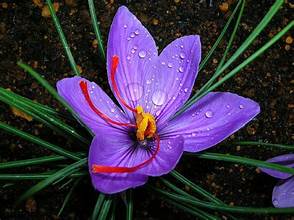
What is Saffron?
Saffron is a spice derived from a flower called Crocus Sativus. It is grown in Greece, India, Spain, and Morocco. Human cultivation and use of saffron spans over 3,500 years.
The red strands of each flower are collected by hand. The other feature of the plant it only blooms one week each year. Those facts are the major factor of the high price of the red strands. Saffron has remained the most costly substance in the world.
Saffron uses seasoning, fragrance, medicine, and dye.
Origins of Saffron are not sure, suggested from Greece, Iran, Mesopotamia and some even promote Kashmir.
In Medicine, Saffron is promoted for the treatment of some ninety disorders. Also used as an herbal remedy. The Egyptian preachers used saffron to treat a variety of gastronomic ailments.
The ancient Greeks and Romans prized Saffron as perfume and used to spread it through their living quarters. Saffron was brought to France early in the Roman conquest of the Gauls., where it was intensely cultivated until AD 271. It returned to France only in the 8th century with the Moors and with the Avignon Papacy in the 14th century

Ancient Persian worshippers did offer Saffron to their gods. It was used in hot teas and has a remedy against melancholy. The Persians used Saffron as a body wash to get rid of heavy perspiration
Saffron came to China with the Mongol invaders, who came through Persia. The Crocus Saffron flower withers, and then Saffron is obtained. It can then, be used to aromatize wine. The Chinese medical expert Wan Zhen wrote that Saffron comes from Kashmir, where it is grown principally to make an offer to Buddha.
Ancient Chinese Buddist Madhyantika presents another account of Saffron’s arrival in India. Saffron stigmas were soaked in water to yield a golden-yellow liquid used to dye fabric.

Saffron is used in Cooking

More Stella’s Recipes
